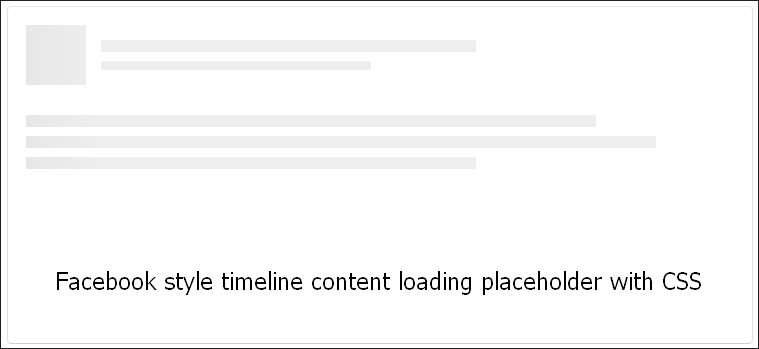In this tutorial, you will learn how to integrate instamojo payment gateway in PHP. This tutorial has purpose to show you simple and easy way to integrate instamojo payment gateway.
PHP Instamojo Instamojo Payment Gateway
- Create Instamojo Account Get Secret Credentials
- Install Instamojo Package Via Composer
- Create a Payment Form
- Make Payment Process
- Create a Success Page
1. Create Instamojo Account Get Secret Credentials
First of all, we need to secret publisher key and secret key from the instamojo. So we need to log in or register from the instamojo and then we got the private and and secret key from the instamojo.
If you don’t have private key and secret key. So, first of all, you need to register here https://www.instamojo.com/ and get private and secret key.
If you have already registered with instamojo, so click this link and login on instamojo and get the private and secret key here.

2. Install Instamojo Package Via Composer
In the second step, we need to install or download the Instamojo PHP package in our project. So go to command prompt follow the below commands:
first command
cd/your_project_root_directory
Then Run the below command to install or download the Instamojo package for PHP.
composer require instamojo/instamojo-php
After you the above command, you will see on command prompt screen look like:

3. Create a Payment Form
Next step, we need to create one view file name index.php, Where we will show the payment form.
After that you need to update the below code into your index.php file.
<!DOCTYPE html>
<html>
<head>
<meta charset="UTF-8">
<meta name="viewport" content="width=device-width, initial-scale=1.0">
<meta http-equiv="X-UA-Compatible" content="ie=edge">
<title>Instamojo Payment Gateway Integrate in PHP - Tutsmake.com</title>
<link rel="stylesheet" href="https://stackpath.bootstrapcdn.com/bootstrap/4.1.3/css/bootstrap.min.css">
<style>
.mt40{
margin-top: 40px;
}
</style>
</head>
<body>
<div class="container">
<div class="row">
<div class="col-lg-12 mt40">
<div class="card-header" style="background: #0275D8;">
<h2>Register for Event</h2>
</div>
</div>
</div>
<form action="http://localhost/instamojo/payment-proccess.php" method="POST" name="instamojo_payment">
<div class="row">
<div class="col-md-12">
<div class="form-group">
<strong>Name</strong>
<input type="text" name="name" class="form-control" placeholder="Enter Name" required>
</div>
</div>
<div class="col-md-12">
<div class="form-group">
<strong>Mobile Number</strong>
<input type="text" name="mobile_number" class="form-control" placeholder="Enter Mobile Number" maxlength="10" required>
</div>
</div>
<div class="col-md-12">
<div class="form-group">
<strong>Email Id</strong>
<input type="text" name="email" class="form-control" placeholder="Enter Email id" maxlength="50" required>
</div>
</div>
<div class="col-md-12">
<div class="form-group">
<strong>Event Fees</strong>
<input type="text" name="amount" class="form-control" placeholder="" value="100" readonly="">
</div>
</div>
<div class="col-md-12">
<button type="submit" class="btn btn-primary">Submit</button>
</div>
</div>
</form>
</div>
</body>
</html>
4. Make Payment Process
Now, we need to create a new PHP file name payment-proccess.php.
In this file we will use the instamojo package and do further payment process in this file.
Now, you need to update the below code into your file.
<?php
require_once('vendor/autoload.php');
$API_KEY = "test_d883b3a8d2bc1adc7a535506713";
$AUTH_TOKEN = "test_dc229039d2232a260a2df3f7502";
$URL = "https://test.instamojo.com/api/1.1/";
$api = new Instamojo\Instamojo($API_KEY, $AUTH_TOKEN, $URL);
try {
$response = $api->paymentRequestCreate(array(
"purpose" => "FIFA 16",
"amount" => $_POST["amount"],
"buyer_name" => $_POST["name"],
"send_email" => true,
"email" => $_POST["email"],
"phone" => $_POST["phone"],
"redirect_url" => "http://localhost/instamojo/payment-success.php"
));
header('Location: ' . $response['longurl']);
exit();
}catch (Exception $e) {
print('Error: ' . $e->getMessage());
}
?>
Note:- Once got payment success it gets redirected to success you page (redirect_url)
5. Create a Success Page
In the final step, we need to create one file name payment-success.php. Here we will show payment-related info like payer name, email, mobile, the status of payment etc.
In other words, after completing the payment process, the response we receive from instamojo prints in this page.
<!DOCTYPE html>
<html>
<head>
<title>Thank You - Tutsmake</title>
<link rel="stylesheet" href="https://cdnjs.cloudflare.com/ajax/libs/twitter-bootstrap/4.1.3/css/bootstrap.min.css" />
</head>
<body class="">
<br><br><br><br>
<article class="bg-secondary mb-3">
<div class="card-body text-center">
<h4 class="text-white">Thank you for payment<br></h4>
<?php
require_once('vendor/autoload.php');
$API_KEY = "test_d883b3a8d2bc1adc7a535506713";
$AUTH_TOKEN = "test_dc229039d2232a260a2df3f7502";
$URL = "https://test.instamojo.com/api/1.1/";
$api = new Instamojo\Instamojo($API_KEY, $AUTH_TOKEN,$URL);
$payid = $_GET["payment_request_id"];
try {
$response = $api->paymentRequestStatus($payid);
echo "<h5>Payment ID: " . $response['payments'][0]['payment_id'] . "</h5>" ;
echo "<h5>Payment Name: " . $response['payments'][0]['buyer_name'] . "</h5>" ;
echo "<h5>Payment Email: " . $response['payments'][0]['buyer_email'] . "</h5>" ;
echo "<h5>Payment Mobile: " . $response['payments'][0]['buyer_phone'] . "</h5>" ;
echo "<h5>Payment status: " . $response['payments'][0]['status'] . "</h5>" ;
echo "<pre>";
}
catch (Exception $e) {
print('Error: ' . $e->getMessage());
}
?>
<br>
<p><a class="btn btn-warning" target="_blank" href="https://www.tutsmake.com/"> Tutsmake.com
<i class="fa fa-window-restore "></i></a></p>
</div>
<br><br><br>
</article>
<br><br><br>
</article>
</body>
</html>




